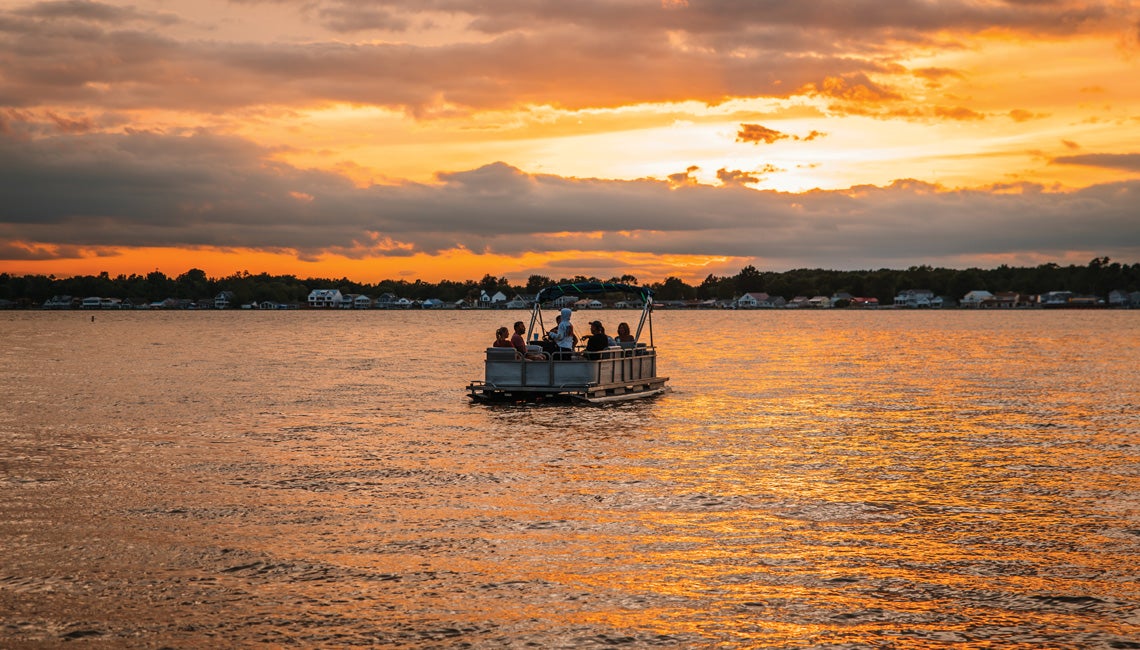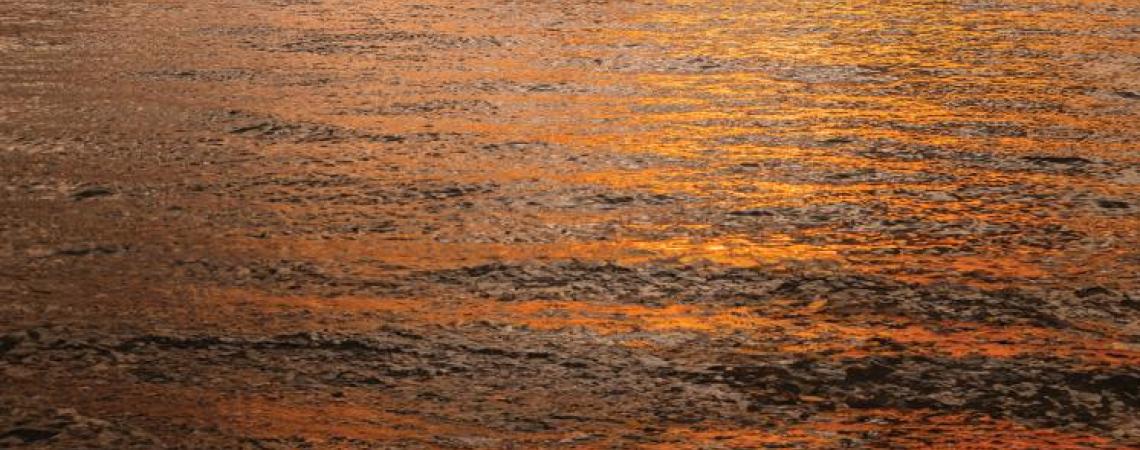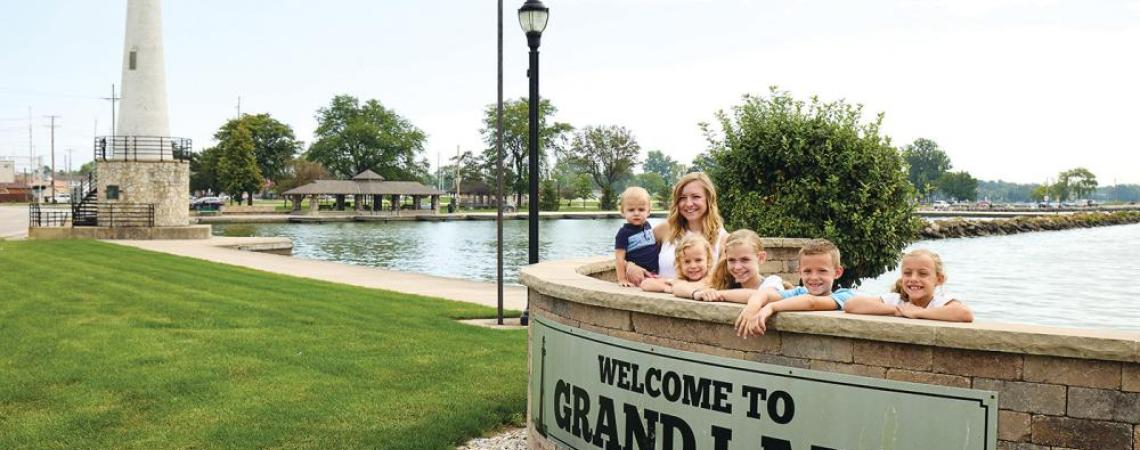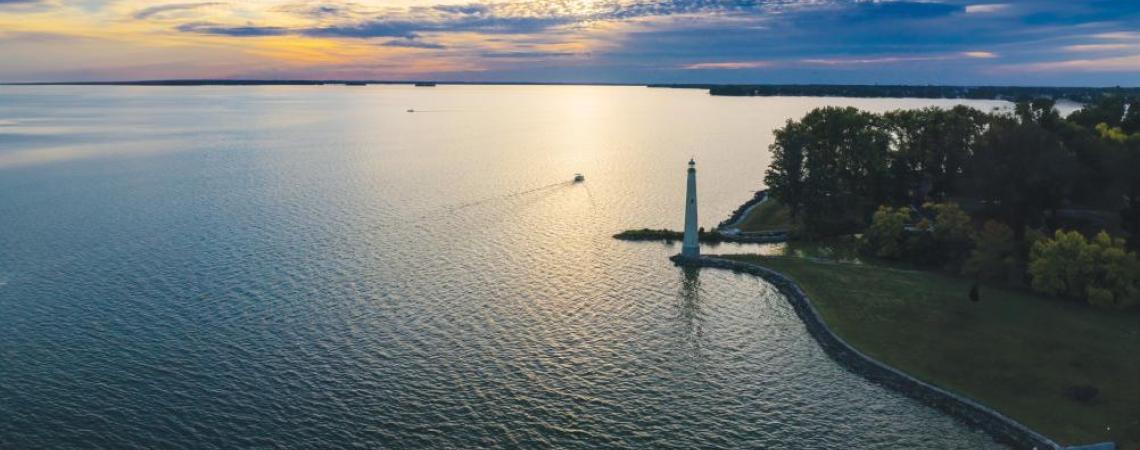Nestled in the heart of Ohio, Buckeye Lake and Grand Lake St. Marys each faced near-devastating challenges over the last decade or two that brought their once-thriving “lake life” — and all the recreational and economic benefits that come with it — to a standstill.
The pictures, and the outlook, were bleak. But now, thanks to the dedication and collaborative efforts of their local communities, both are witnessing a resurgence, bustling with new growth and opportunity for Ohioans and out-of-staters alike.
Engineering disaster
Buckeye Lake, a 3,100-acre lake located 30 miles east of Columbus, was formed from swampland left by a retreating glacier more than 11,000 years ago — though its current form is human-made: A dike constructed to block the Licking River in the 1820s filled the reservoir, which served as a feeder for the Ohio and Erie Canal.
Buckeye Lake, a 3,100-acre lake located 30 miles east of Columbus, was formed from swampland left by a retreating glacier more than 11,000 years ago.
Throughout the first half of the 1900s, Buckeye Lake reigned as the premier destination for leisurely outdoor activities in central Ohio. Its amusement park, complete with Ferris wheel and roller coasters, enticed younger visitors, while others boated, sunbathed, or just lounged around the lake. By the 1940s, as many as 50,000 people per day came calling, and show business superstars like Glenn Miller, Louis Armstrong, and Frank Sinatra played shows in its huge dance halls. Buckeye Lake became the first of Ohio’s canal lakes to be named a state park in 1949.
“Buckeye Lake has always been Ohio’s playground,” says Jonett Haberfield, executive director of Visit Fairfield County. “It’s centrally located, a really good place to escape from the city.”
The amusement park closed in 1970, but the lake region remained a popular destination for those in search of that lake life. In 2015, however, the U.S. Army Corps of Engineers released a report that warned of an “imminent catastrophic failure” of the 1820s earthen dam that held back its waters.
“They drained the lake while they repaired that dam, and that was a dark time when people were worried about their property value and selling their homes. Businesses closed. No one really knew what the future would bring,” says Haberfield.
The project to rebuild the dam was supposed to last until 2020 and cost $150 million, but finished nearly two years early and $43 million under budget. Now, after several ensuing years of economic development, Buckeye Lake has regained its life as an enjoyable escape, drawing visitors from across the region, and it is thriving.
Central to the revitalization efforts is the collaboration among Fairfield, Perry, and Licking counties, which surround the lake. Much of the land area nearby is served by electric cooperatives — Lancaster-based South Central Power Company to the west and south, The Energy Cooperative of Newark to the east and northeast, and Guernsey-Muskingum Electric Cooperative a little farther to the east.
The Buckeye Lake Regional Corporation has facilitated discussions and initiatives aimed at promoting the area as a premier destination. That concerted effort has fostered a sense of community pride and unity among those who live there.
“It’s been an amazing change,” Haberfield says. “There are a lot of new property owners, new business owners, and new enthusiasm about the lake as a tourist destination. You don’t even have to be on the water to enjoy the experience of Buckeye Lake. I enjoy sitting along the shoreline at the winery and watching people enjoying all the activities the lake has to offer. Everyone is in vacation mode.”
Why visit?
Visitors to Buckeye Lake can enjoy all kinds of water-based activities: fishing, kayaking, swimming, boating, and the like. Additionally, Buckeye Lake offers plenty of activities beyond the water. Weldon’s Ice Cream Factory is a local tradition, drawing visitors for its delicious homemade treats. Buckeye Lake Winery, established over a decade ago, is a popular venue for weddings and events. New restaurants have recently opened that have added to the already diverse culinary scene, attracting patrons seeking an upscale atmosphere. Residents from neighboring communities now frequent the area during the week because of the unique dining experiences. Live music can be heard at numerous venues nearly every night throughout the summer, and an increasing number of businesses now remain open during once-dormant winter months. Winterfest, held at the end of January and organized by the Buckeye Lake Regional Chamber of Commerce, has become a highlight of the winter season.
Environmental nightmare
Grand Lake St. Marys, located in Mercer and Auglaize counties, was constructed in the mid-1800s as a feeder lake for the Miami-Erie Canal. Even at more than 13,000 acres, Ohio’s largest inland lake wasn’t designed with any recreation in mind. In fact, the only commercial activities on the reservoir for its first several decades included ice harvesting (a necessity in an era before electricity and refrigeration) and commercial fishing. For a brief period, the lake even hosted oil derricks, marking a pioneering moment as Grand Lake St. Marys became the site of the world’s first offshore oil drilling rigs.
With the addition of railroads in the early 1900s, the necessity for canals diminished, prompting a shift in how Grand Lake St. Marys was utilized. A sizable amusement park sprouted up on the lake’s eastern shore. A vibrant concert and dance hall appeared at the northwest corner. Cabin resorts and campsites surrounded the lake’s expansive 52-mile shoreline. Grand Lake St. Marys was officially designated as an Ohio State Park in 1949.
However, Grand Lake has had its ups and downs throughout the years, and as early as the 1960s, reports showed that the lake was eutrophic, meaning excessive nutrients — mostly fertilizer runoff from nearby farmland — could lead to algal growth. By the 1990s, the Ohio EPA declared the lake’s watershed as Ohio’s most degraded.
A watershed project for Grand Lake St. Marys formed in the late 1990s to start local planning for improvements, and the efforts, though voluntary, made a significant impact on the well-being of the lake.
However, in 2010, Grand Lake St. Marys suffered a large bloom of blue-green algae — which is actually a type of bacteria that produces toxins dangerous to people, animals, and fish. People were advised not to swim or even wade in the water, not to take boats out onto the lake, and not to allow pets near the shore.
“This spurred a lot of interest from state officials and local groups and got national attention,” says Theresa Dirksen, Mercer County agriculture and natural resources director. The lake’s reputation as a carefree summer playground was nearly destroyed.
The algal bloom of 2010 also spawned numerous groups tasked with improving the quality of the lake’s water.
- The Lake Restoration Commission (LRC) consists of representatives from Ohio Department of Natural Resources, Mercer Soil and Water Conservation District, Wright State University, and surrounding communities including the cities of Celina and St. Marys and Mercer and Auglaize counties, among others. It works on plans to improve the lake directly with things like increased dredging, treatment trains, and new technologies.
- Ag Solutions group, a grassroots effort by local farmers, focuses specifically on technologies and methods to improve manure management.
- The Lake Facilities Authority (LFA) is a public entity consisting of the Mercer and Auglaize county commissioners that can accept grants, bid projects, own land, etc. The LFA has taken the lead on land acquisition to install treatment wetlands and natural spaces in the Grand Lake St. Marys watershed.
In late 2011, the Grand Lake St. Marys watershed was officially declared “distressed” by the Ohio Department of Agriculture, which set into motion a set of rules for certain livestock producers to follow, which are still in place.
“The methods that we have employed here to improve water quality are being looked at by so many others,” Dirksen says. “From my perspective, Grand Lake St. Marys has become a model watershed for all of Ohio, possibly even the U.S., to follow.”
And of course, with the improved quality has come a rebuilt reputation — and a revitalized economy. “Lake home prices are up and so is the number of visitors,” says Donna Grube, executive director of the Grand Lake Region Visitors Center. “The state park campgrounds reported a record number of guest nights in 2023, and we have set a new record for lodging tax collection. There is still work to be done, but the positivity of the situation, compared to a decade ago, is almost unbelievable.”
Why visit?
13,500-acre Grand Lake St. Marys and its numerous boat launches offer an expansive surface for activities like waterskiing, kayaking, tubing, and year-round fishing for bass, crappie, perch, bluegill, catfish, and walleye. But Grand Lake St. Marys also is surrounded by nearly 600 acres of lakeside parkland, where visitors can enjoy 10 miles of hiking, biking, and snowmobile trails, as well as swimming beaches and picnic areas. Birdwatching enthusiasts will find a diverse range of waterfowl and migratory birds. Lakeside festivals, concerts, races, and other events provide entertainment for visitors of all ages throughout the year. Local restaurants offer enticing cuisine and lakeside dining experiences, adding to the overall charm of the area. Lodging opportunities cater to all preferences and budgets, from rustic camping to luxury hotels with expansive lake views. Boardwalk Village opened in 2022, offering
the feel of resort lodging.












